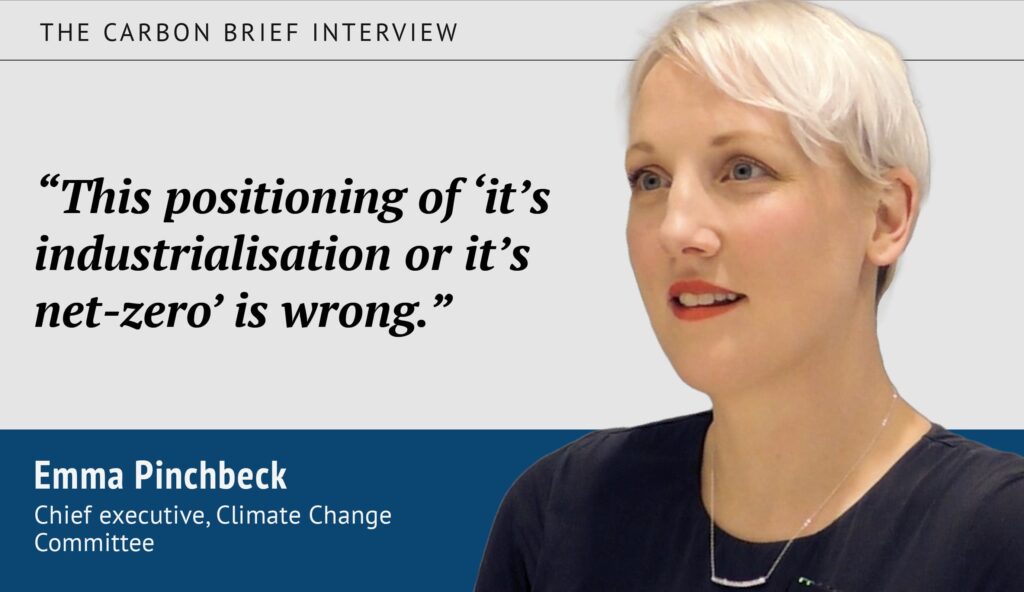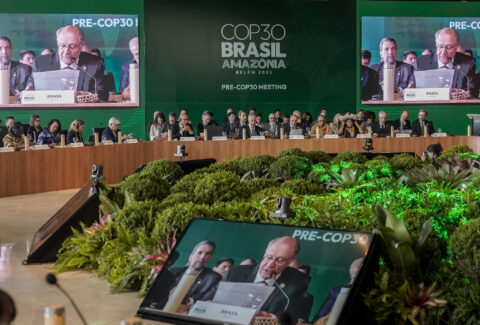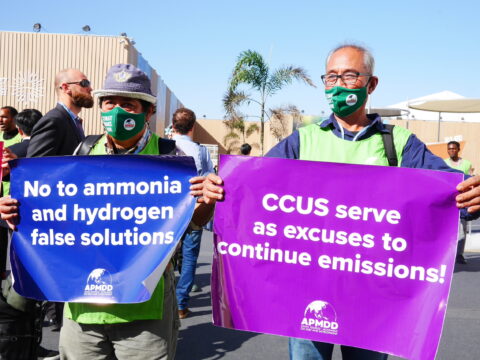Sunday November 17th was the official day of rest for COP29 participants as negotiations stalled, the pavilion chaos closed its doors, and sessions ceased for the entire day. The result: the city of Baku was bustling to accommodate the sudden extreme influx of tourists and foreigners looking to explore the city all at once. I was among them, looking to enjoy some sight seeing and I set my sights on the historic Old City area.
After 1 full week in Baku I am finally getting a handle on how to navigate the city. Maybe. But Old City was a challenge as the cobblestone roads weave in and out of one another irregularly, most roads too narrow to accommodate more than a single person to pass. But it is certainly beautiful.

Excited to give my COP29-overloaded brain a break, I decided to visit the National Museum of History of Azerbaijan which is located just outside of the Old City. My favorite exhibitions were the ancient pottery samples which provided a window into the daily workings of Azerbaijani life going back to Neolithic times. As I moved through the exhibits, getting closer and closer to contemporary times, I noticed I was enjoying myself a little less the closer I got to today. As the exhibits’ foci shifted from historical intrigue to modern socio-political landscapes, modern war, and economy I became reminded of the reality of historical trauma that the global proletariat have endured under oppressive regimes the world over.
I learned that the very first oil industry began in Baku, Azerbaijan. As early as the 1200’s, famous Venetian traveler Marco Polo recorded his chancing upon what is thought to be an oil well in Azerbaijan. The Azerbaijanis used to procure oil for use in burning and fire, an effect of combustion and a very early precursor for the use of oil in combustion engines and global transport. According to the United Nations, fossil fuels account for over 75% of greenhouse gas emissions as well as over 90% of carbon dioxide emissions globally.
It was not lost on me how ironic it was that I traveled halfway across the world for COP29, with a mind to dismantle the global reliance on fossil fuel usage, without realizing I was also on a pilgrimage to the source of the oil industry itself.
In 1806 the Russian Empire occupied Baku and began a monopoly on Azerbaijani oil. At the National Museum of History of Azerbaijan the exhibit showcasing this time period said in plain terms: The Russian Empire exploited Baku’s oil resources, exporting Baku oil products to Russia while providing no compensation to Azerbaijan in the process. And as Vladimir Lenin famously said, ‘Soviet Russia cannot survive without Baku oil.’ — resulting in the Russians Red Army occupation of Azerbaijan until its fall in 1991. Azerbaijan finally claimed independence in 1991.
A large cause of social turmoil, oppression, and exploitation of Azerbaijan throughout history has to do with their access to a valuable commodity gifted to this area through the natural resources located on this land. Learning the history of Baku and the exploitation of land here led me to think about something I noticed at COP29 this past week that has been on my mind: the expansion of ecotourism and the well meaning greenwashing of colonial exploitation.
In many discussions occurring at COP29 this year there is a focus on solution building and how the proverbial ‘we’ will fund sustainable climate mitigation and adaptation movements. As the United Nation likes to point out, the first and worst effects of the global climate crisis are being felt by the Indigenous peoples of the world. Right now, our island relatives are already navigating devastating losses of natural habitat and shifting geography resulting in further degradation of traditional ecological knowledge systems.
The irony is that many of these island communities also support a disproportionate fraction of global tourism. In an effort to experience paradise, the Global North flock to island communities and spend portions of their salaries in these places in the process. Many sessions and government entities are now proposing efforts and techniques to expand this spending power to allow for further economic stimulus in these communities so that they may have an easier time supporting their climate adaptation efforts.
While I will never knock a hustle on the part of the Indigenous folks looking to increase earning potential in their communities, I am alarmed that we are entertaining government representatives from the Global North who are actively proposing ways for the Global South to increase the exploitation of their natural resources in order to… save their natural resources?
Why is the burden of climate adaptation being placed upon communities that contribute to the climate crisis the least?
There are generational fishing traditions in Jamaica which cannot be practiced today due to hotels and resorts monopoly on beach front property. Delicate reefs are being compromised due to tourism. Native peoples in Tuvalu are watching their ancestral coastlines dissipate within their lifetimes. The burden of funding climate adaptation, cultural preservation and environmental protections should not fall upon those who have been burdened and exploited the most themselves. Us Native folks have already lost so much and continue to find our ways are compromised in the face of the climate crisis. It is time the Global North pay their equitable share. Quit pretending these carbon credits will reverse the damage done and roll up your sleeves.
Antavia is a Climate Generation Window Into COP delegate for COP29. To learn more, we encourage you to meet the full delegation, support our delegates, and subscribe to the Window Into COP digest.

Antavia descends from the Mille Lacs Band of Ojibwe and grew up in South Minneapolis. She earned her associates degree at Minneapolis College as a Power of You scholar and continued her studies in chemistry at Metro State University as an Increasing Diversity in Environmental Careers Fellow, as well as abroad in Cuernavaca, Mexico as a Gilman International Scholar. Antavia has been a PhD student of chemistry at the University of Minnesota where she helped teach undergraduate analytical chemistry labs and spent time researching and synthesizing porous nanoparticles for PFAS phytoremediation as a 3M Science and Technology Fellow. In her work she develops and implements a STEM curriculum that honors and supports Indigenous ways of knowing and cultural protocol for Native American high school students in South Minneapolis. Her work in STEM educational equity has been shown to increase science interest and engagement for Indigenous girls in particular.
The post Ecotourism or Exploitation? appeared first on Climate Generation.
Climate Change
COP30 president hints Brazil may be open to a cover decision in Belém
Until recently, the Brazilian team running the COP30 UN climate summit next month had stated strongly that they had no plan to produce a negotiated cover decision at the end of the talks – but that position may be starting to shift as some governments are now said to be seeking one.
COP30 President André Corrêa do Lago told Climate Home News late Wednesday after the pre-COP meeting in Brasilia that he was listening to those requests.
“As the presidency, if I feel that the countries are willing to analyse the possibility of a cover decision, of course I will take it into consideration. Because I truly want COP30 to be a country-led COP,” he said in an interview.
A cover decision is a text agreed by governments that is not tied to any specific agenda item and spans various issues that countries want to address. From COP25 to COP27, cover decisions offered political guidance on climate action and put topics that were crucial to some delegations – but not covered by the formal agenda – on the table for future discussions.
At COP26, for example, a cover decision on the Glasgow Climate Pact mentioned fossil fuels for the first time, calling for efforts towards the phase down of unabated coal power. At COP27 in Sharm El-Sheikh, the cover decision marked the launch of both the Just Transition Work Programme and the Loss and Damage Fund, from then on thrusting them decisively into the negotiations.
In July, Corrêa do Lago told Climate Home that he personally did not like the idea of a cover decision because he preferred “a more constructive, transparent and open diplomacy”. He has not changed his view on how he wants to see business done at COP30.
After a day of intense consultations with countries following the pre-COP meeting in Brasilia on Monday and Tuesday, the veteran Brazilian diplomat reiterated that he is not keen on a cover decision because it tends to “create a certain mystery” and “suddenly appears” in the midst of difficult negotiations.
“The other problem is that cover decisions have statistically proven to have no subsequent follow-up,” Correa do Lago added, arguing that “most countries felt a little abused by the cover decisions”.
‘Several countries’ want a cover decision
However, the game-changer this time around could lie in how such a document is landed and what it represents.
“The current situation is different,” said the incoming COP president. “Several countries are openly calling for a cover decision,” he explained. He emphasised that he had even received such a request in the bilateral meetings he held on Wednesday with some countries, without specifying which.
Those who have indicated they would support a cover decision in closed-door meetings include both developing and developed countries, as a way to give prominence to issues that are critical to their positions and interests, or could be complicated to address under set agenda items.
For Corrêa do Lago, if the COP30 conference begins with a cover decision already in mind, it could avoid the last-minute scramble and element of surprise that has occurred in the past, and instead “constitute a true element of negotiation”.
Vehicle for a ‘race to the top’
Some civil society organisations that follow the COP process have also called for COP30 to conclude with an ambitious cover decision.
Andreas Sieber, associate director of global policy and campaigns at 350.org, argues that a cover decision would be the most credible way to confront the gap in climate action head-on.
“A cover decision is no magic bullet to solve negotiation challenges, but it offers the best-placed procedural vehicle to balance different elements of the ambition package, allowing a race to the top instead of zero-sum trade-offs,” he wrote in an op-ed for Climate Home.
Over the past month, the possibility has also been raised that such a document could be presented as a so-called “omnibus decision” rather than a cover decision.
It is unclear what the difference would be, as the UN climate talks have never produced an omnibus decision – but the suggestion is that an omnibus decision would amalgamate key elements of COP30, including those that do not have a clear place in the talks.
Either way, issues of relevance to multilateral climate policy that are tricky to resolve or need strong political backing to drive them forward outside the talks could find a home in such a decision.
Home for finance goals and NDC gap?
Natalie Unterstell, president of the Brazilian Talanoa Institute, explained that a cover decision could be an option for formally incorporating a new climate finance target for adaptation which the poorest countries are pushing for.
Sieber added that this could be the space for countries to identify steps forward for the Baku to Belém Roadmap to $1.3 Trillion on boosting climate finance in the next 10 years, so that it does not end up as little more than an informational report.
Countries trail COP30 clash over global response to shortfall in national climate plans
Others have suggested a COP30 cover decision could be the place where countries set out how they plan to bridge the expected large gap in planned emissions reductions and the cuts needed to keep global warming to 1.5 degrees Celsius, as they pledged to aim for in the Paris Agreement.
Even with the growing possibility of having a cover or an omnibus decision in Belém, Corrêa do Lago said he would prefer the COP to proceed as normal – with the approval of the agenda at the start, negotiations on the agreed items, and then “to make decisions” on that basis.
However, he warned that even approving the agenda “could be a challenge because several countries are requesting new agenda items that we know would be very difficult to reach consensus on”.
The post COP30 president hints Brazil may be open to a cover decision in Belém appeared first on Climate Home News.
COP30 president hints Brazil may be open to a cover decision in Belém
Climate Change
Japan uses “diplomatic muscle” to push carbon capture as fossil fuel panacea
Japan has led two major regional summits this month to promote carbon capture technologies, an effort that climate groups say could create a smokescreen for the continued use of fossil fuels.
Last week, Tokyo hosted the Japan CCUS Summit, focused on “carbon capture, utilisation and storage”, a conference that was attended by major domestic and international oil and gas firms, as well as government officials from the UK, Canada, Indonesia, Malaysia, Singapore, Thailand and South Australia.
The day after, energy ministers from Japan, Australia and nine Southeast Asian countries met in Kuala Lumpur under the Asia Zero Emission Community (AZEC), an initiative that Japan launched in 2023 to propel decarbonisation but has since been criticised as promoting and prolonging fossil fuel use.
In a joint statement, AZEC ministers confirmed their commitment to the COP28 deal in Dubai, in which countries agreed to transition away from fossil fuels, while also accelerating carbon capture. The AZEC statement stresses the importance of “various and practical pathways” to achieving carbon neutrality.
Carbon capture and storage (CCS) encompasses abatement technologies that capture the CO2 emissions of fossil fuel projects at the production site. While CCS is regarded as a solution to reduce emissions in sectors that are difficult to decarbonise like steel or cement, it has so far proved expensive, and capture rates have been lower than expected.
In the lead-up to the COP30 climate summit in Brazil next month, there are concerns about what Tokyo’s enthusiasm for CCUS means for broader emissions reduction efforts.
“There’s a lot of diplomatic muscle that Japan is deploying behind the promotion of CCS,” said James Bowen, a climate and energy policy analyst at Climate Analytics, a research organisation. “Japan has already played a significant role in previous COPs in pushing this idea of abated fossil fuels being a viable alternative to fossil fuel phaseout.”
According to the Japanese government’s 7th Strategic Energy Plan published earlier this year, CCUS can support decarbonisation in sectors where electrification is hard to achieve only with renewables, by abating emissions from fossil fuel sources.
“CCUS is indispensable for simultaneously achieving energy security, economic growth and decarbonisation,” the plan says, adding that Japan will consider support systems to encourage investment and develop suitable sites, among other things.
Climate Home News contacted Japan’s Ministry of Economy, Trade and Industry for comment but had not received a response at the time of publication.
Lifeline for fossil fuels
The latest AZEC declaration adopts language often used by Japan to signal that it and other countries, especially in the Global South, “have to have (their) own pathway to reach net zero”, due to specific “limitations” and “conditions”, said Makiko Arima, a senior finance campaigner at Oil Change International, which recently published a fact sheet on Japanese financing of CCS.
Arima sees Japan’s approach as a smokescreen for continued justification for fossil fuels under the guise of decarbonisation.
Investing in CCS risks diverting resources from clean energy adoption in Southeast Asia, where renewables could make up around 90% of the power supply by mid-century but 99% of solar and wind energy potential remained untapped, according to a 2023 Ember report.
AZEC has led some progress on clean energy in Southeast Asia, with several recent agreements on solar energy, for example. But there is “a concerningly high share of various fossil technology-related agreements and projects”, said Hanna Hakko, senior policy advisor at climate change think-tank E3G.
For example, out of 17 projects in Indonesia focused on new and existing power facilities and industrial energy projects, seven were related to improving the efficiency and carbon footprint of existing fossil fuel power plants, including co-firing of alternative fuels with coal and gas, an E3G assessment of AZEC’s first years, published prior to last week’s ministerial meeting, shows.
Comment: Is “hard-to-abate” really that hard – or is it a justification for delay?
Among the almost 50 memoranda of understanding announced at the meeting this month, six are specifically focused on carbon capture and at least another three refer to it as one of several targeted technologies.
Of the projects announced this year, eight are directly related to fossil fuels, while another two are related to technologies often used to abate fossil fuels such as ammonia and CCS, while not explicitly mentioning fossil fuel-related use.
Later this month, another AZEC summit in Malaysia will bring together the heads of government of its 11 member states.
Costly and controversial technology
Carbon capture projects worldwide have so far failed to meet expectations due to exorbitant costs and technical hurdles. While scenarios aligned with the Paris Agreement goals assume CO2 capture rates of 95% or more in CCUS projects, real-world results have hovered around 50% on average.
Because of this under-performance, according to a report by Climate Analytics, “if Asian countries were to follow a high-CCS pathway, it could lead to additional cumulative GHG [greenhouse gas] emissions of almost 25 billion tonnes of CO2-equivalent by 2050″ – or more than double China’s annual emissions.
“People will eventually understand that [CCS is] an expensive and failure-prone technology and diverts attention away from more viable climate and economic strategies,” said Bowen, who worked on the report. “But in the meantime, it will delay climate action.”
While other regional players such as China and South Korea are also investing in carbon capture, Japan is leading the way. The world’s fifth-largest emitter aims to launch the technology commercially by the end of this decade and capture 120 million-240 million tonnes per annum (mtpa) of CO2 by mid-century. At the moment, all the world’s CCS plants combined can hold about 51 mtpa.


“One of the big drivers for pushing CCS is that it benefits high-emitting sectors, like coal-fired power plants, that the (Japanese) government doesn’t want to phase out,” said Ayumi Fukakusa, executive director of Friends of the Earth Japan, which contributed to Oil Change International’s research.
According to Fukakusa, the prevailing narrative is that Japan is not competitive in clean energy sectors, therefore its industries want to continue leveraging their perceived advantage in fossil fuel-based technologies.
While they don’t necessarily believe carbon capture will generate significant economic advantages – hence the reliance on Japanese government subsidies – “they can buy time by promoting CCS,” Fukakusa believes.
Business-as-usual energy policy
Over the past 11 years, Tokyo has spent $5.2 billion in public funds on domestic and overseas carbon capture – including blue hydrogen, where hydrogen is produced from natural gas and CO2 is captured in the process, according to Oil Change International. Its report frames Japan’s CCS policy as perpetuating fossil fuel-based industries while diverting finance from proven climate solutions such as renewable energy.
The country has also explored ways to ship captured CO2 to underground or undersea storage sites thousands of kilometres away in Southeast Asia, especially in Malaysia and Indonesia, and Australia.
Carbon colonialism? Malaysia and Indonesia plan storage hubs for Asian emissions
At last week’s AZEC ministerial meeting, a memorandum of understanding was announced between the Japanese economy ministry and the Malaysian government that foresees bilateral discussions through a joint committee to co-operate on carbon capture, including cross-border CCS.
“It’s very hard to imagine wide-scale uptake of CCS [in Southeast Asia] in the near future, whether supported by AZEC or not,” E3G’s Hakko added. “All these CCS-related initiatives and events are really part of Japan’s longer-term approach to energy policy.”
Consistent with the Japanese government’s approach of pushing “various realistic pathways”, according to Arima of Oil Change International, CCS is “giving a spin to not actually changing much, but making it seem that they’re addressing” the need to reduce climate-heating emissions.
The post Japan uses “diplomatic muscle” to push carbon capture as fossil fuel panacea appeared first on Climate Home News.
Japan uses “diplomatic muscle” to push carbon capture as fossil fuel panacea
Climate Change
DeBriefed: Earth’s first ‘tipping point’; Climate adviser interview; How warming affects children’s health
Welcome to Carbon Brief’s DeBriefed.
An essential guide to the week’s key developments relating to climate change.
This week
Earth’s first climate ‘tipping point’ reached
CORAL IN CRISIS: A new report warned that the world has reached its first climate “tipping point” as global warming pushes warm-water coral reefs towards an irreversible decline, the Press Association outlined. The report, co-authored by more than 160 scientists in 23 countries, also warned the world is “on the brink” of reaching other tipping points, including the dieback of the Amazon, the collapse of major ocean currents and the loss of ice sheets, the Guardian noted.
CO2 RECORD: Carbon dioxide (CO2) in the atmosphere reached the highest level ever recorded last year, according to a new report by the UN’s World Meteorological Organization (WMO) covered by the Associated Press, which said it was fuelling “more extreme weather”. On top of burning fossil fuels, an increase in wildfires contributed to the rise in CO2 levels over the last year, Reuters reported.
DECLINING SINKS: The Guardian said WMO scientists are also “concerned” that the natural land and ocean “sinks” that remove CO2 from the air are “weakening as a result of global heating”. Separate new research concluded that Australia’s tropical rainforests are among the first in the world to start emitting more CO2 than they absorb, Agence France-Presse reported, with the decay of dead trees emitting more than the growing trunks and branches can store.
INCREASED EMISSIONS: Wildfires burned an area of land larger than India during the 2024-25 “global fire season”, emitting more than 8bn tonnes of CO2, almost 10% above average. This is according to the annual “state of wildfires” report covered by Carbon Brief, which also finds that four of the most prominent extreme wildfire events were found to have been more likely to occur as a result of human-caused climate change.
October extremes
MEXICO MOURNING: At least 66 people have died and 77 people are still missing after five days of torrential rain caused “historic” floods and landslides in Mexico, Reuters reported. The Associated Press said that the extreme weather “cut off 300 towns…from the outside world” and the New York Times reported Mexican president Claudia Sheinbaum saying that 100,000 homes were affected.
TYPHOONS TOO: At least 14 gold mine workers have been killed in floods after heavy rainfall in Venezuela, according to Agence France-Presse. At least one person was killed, two are missing and more than 1,500 people have been displaced across Alaska due to Typhoon Halong, the Associated Press reported.
Around the world
- ‘HEADING FOR THE ROCKS’: US president Donald Trump’s plan to derail a global climate agreement for the shipping industry is “heading for the rocks”, as more than 100 nations gathered in London for talks to approve the legally binding regulation, with a decision expected today, the Financial Times reported.
- COP FLOTILLA: A group of Amazon Indigenous peoples have departed from Ecuador to attend COP30, planning to travel more than 3,000km on rivers and grow in size along the way, according to Folha de São Paulo.
- KIWI CONCERN: Scientists have warned that New Zealand’s decision to weaken its methane emissions reduction target, from a 24-47% cut on 2017 levels by 2050 to a 14-24% cut, sets a “worrying precedent”, said Bloomberg.
- DIPLOMACY DETOUR: The EU plans to cooperate with US local authorities and businesses to “bypass” the federal government on clean energy, the Financial Times detailed.
- VOTING VICTORY: After years of campaigning, citizens of Hamburg voted for stricter climate targets for the city during a referendum, reported Der Spiegel.
- ‘ENVIRONMENTAL FREEFALL’: A report on the environmental damage after nearly two years of conflict found that Gaza’s energy, water, food and ecosystems have been “devastated” and are “on the brink of a total collapse”, the Independent outlined.
582 gigawatts
The record amount of new renewable energy capacity added globally in 2024, reported Reuters.
Latest climate research
- Just seven African nations “would be able to satisfy their nutrient gaps” through production expansion, given water and land constraints | Nature Food
- An experiment finds that generative artificial intelligence “can alter the information diet [climate] sceptics consume” | Nature Climate Change
- While many frog species show “short-term resilience” to climate-induced wildfires, flooding poses an “underappreciated threat to frog biodiversity” in Australia | Biological Conservation
(For more, see Carbon Brief’s in-depth daily summaries of the top climate news stories on Monday, Tuesday, Wednesday, Thursday and Friday.)
Captured

Carbon Brief sat down for an in-depth interview with Emma Pinchbeck, the chief executive of the UK’s Climate Change Committee (CCC). The CCC is a statutory body created under the Climate Change Act 2008 and is the official adviser to the UK government on climate change mitigation and adaptation. The conversation covered a range of topics from the UK’s high energy costs to talking to children about climate change.
Spotlight

Why paediatricians want climate action
This week, Carbon Brief speaks to Dr Helena Clements, a paediatrician who was appointed as the inaugural officer for climate change for the UK’s Royal College of Paediatrics and Child Health.
Carbon Brief: How does climate change risk children’s health?
Dr Helena Clements: In lots of ways. Partly it’s about the direct impacts of climate change on health and that might include air pollution as a really easy example here in the UK right now. We know about Ella Adoo-Kissi-Debrah who died of asthma induced [by] air pollution on her way to school and the little boy in [Rochdale], Awaab [Ishak], who died because of exposure to indoor air pollution. Those are two people that pediatricians have looked after and failed to save, who have been directly impacted by air pollution in this country. Of course it’s much worse in other parts of the world, particularly where people are cooking on open fires. It’s a global problem.
For children who are exposed to air pollution, the answer isn’t to lock them up inside. It’s to clean the air by addressing the burning of fossil fuels. It’s about creating green spaces and active transport, because that’s better for our mental health, our physical well-being and we’re also cleaning the air. All of the solutions are solutions for climate change, as well as for health, and it’s not anything that I can prescribe.
Only about 20-30% of your health is down to what a doctor can do. I can treat asthma, but I’m not in control of the causes.
CB: How do you engage the medical community – and external groups – with health risks facing children from climate change?
HC: What I find helpful is to paint that picture of health and wellbeing, because if we had healthy children and adults, we would reduce demand on our services. I sometimes talk about being a lazy pediatrician. If everybody had their immunisations and a healthy diet, and we had clean air and families who had better health literacy, there would be much less work for me to do because most of what children need is good conditions to grow and thrive in.
A healthy diet is high in fibre, fruit and vegetables, which is also a lower-carbon diet. Pediatricians spend a lot of time treating constipation because children don’t eat a healthy diet and it’s rarely more complicated than that. We need to help children and families to eat more healthily to avoid things that need treatment and become more complex.
So there’s lots of benefits to focusing on the health and wellbeing side, rather than necessarily talking lots about the climate, but I talk about the two things simultaneously. Healthy people have a lower carbon impact than unhealthy people who require lots of medicines and trips to hospital.
CB: What else does your work in this intersection of climate change and children’s health involve?
HC: We’ve got three things really. One is advocating about climate itself because climate change is a health crisis, a massive risk, because of changing demographics and vector-borne diseases coming our way. The second thing is the NHS [National Health Service] is a very carbon-dense business, so we need to decarbonise. There’s the “how do we get rid of all these anesthetic gases or single-use items” practical changes that we need to make. And then there’s the fact that health is expensive and, if we were all healthier through, not directly tackling climate change, but say, tackling air pollution, we’d make health cheaper and be addressing climate change. You can tackle it from different lenses, but the solutions are all the same.
This interview has been edited for length.
Watch, read, listen
TORY LEGACY: Imperial College London’s Grantham Institute released a new Youtube video offering the “inside story” of the UK’s net-zero target, featuring former prime minister Theresa May.
BIG IN BRAZIL: With one month to go until COP30 begins in Belém, Brazil, Agence France-Presse listed “four Brazilians to watch” at the conference.
COX QUIZZED: In a new A Question of Science podcast, Prof Brian Cox and a panel of experts answered listener’s questions on everything from carbon capture to climate sceptics.
Coming up
- 19 October: Bolivia presidential elections (2nd round)
- 20-23 October: Africa energy efficiency policy training week, Accra, Ghana
- 20-24 October: 27th meeting of the Convention on Biological Diversity Subsidiary Body on Scientific, Technical and Technological Advice, Panama City, Panama
Pick of the jobs
- Global Green Growth Institute, senior energy officer | Salary: $77,904. Location: Port Moresby, Papua New Guinea
- Mongabay, wire reporter | Salary: Unknown. Location: Remote in Asia
- London School of Economics Grantham Research Institute on Climate Change and the Environment, editorial manager | Salary: £43,277-£55,497. Location: London
- Centre for International Environmental Law, publications manager | Salary: $81,000-$110,000. Location: Remote (EST)
- UN Environment Programme, chief scientist and the director of the office of science | Salary: Unknown. Location: Nairobi, Kenya
DeBriefed is edited by Daisy Dunne. Please send any tips or feedback to debriefed@carbonbrief.org.
This is an online version of Carbon Brief’s weekly DeBriefed email newsletter. Subscribe for free here.
The post DeBriefed: Earth’s first ‘tipping point’; Climate adviser interview; How warming affects children’s health appeared first on Carbon Brief.
-
Climate Change2 years ago
Spanish-language misinformation on renewable energy spreads online, report shows
-
Climate Change2 months ago
Guest post: Why China is still building new coal – and when it might stop
-
Climate Change Videos2 years ago
The toxic gas flares fuelling Nigeria’s climate change – BBC News
-

 Greenhouse Gases1 year ago
Greenhouse Gases1 year ago嘉宾来稿:满足中国增长的用电需求 光伏加储能“比新建煤电更实惠”
-
Greenhouse Gases2 months ago
Guest post: Why China is still building new coal – and when it might stop
-

 Climate Change1 year ago
Climate Change1 year ago嘉宾来稿:满足中国增长的用电需求 光伏加储能“比新建煤电更实惠”
-

 Carbon Footprint2 years ago
Carbon Footprint2 years agoUS SEC’s Climate Disclosure Rules Spur Renewed Interest in Carbon Credits
-
Renewable Energy3 months ago
US Grid Strain, Possible Allete Sale












